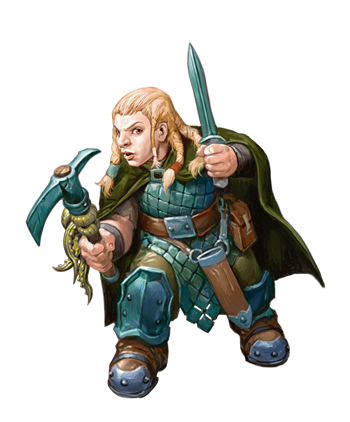 We’ve completed our second full rotation of the twelve classes in the Player’s Handbook, not to mention taken a deep dive into the first 5 levels of D&D’s thirteenth class, the inventive and arcane Artificer! This wave of the Class 101 series will appraise every subclass within the Player’s Handbook and break down each subclass’s strengths, weaknesses, thematic elements, and everything else a player would want to know before playing that subclass. Because of this, you will need to own the Player’s Handbook (or purchase the subclass a la carte on the Marketplace) in order to make full use of this series.
We’ve completed our second full rotation of the twelve classes in the Player’s Handbook, not to mention taken a deep dive into the first 5 levels of D&D’s thirteenth class, the inventive and arcane Artificer! This wave of the Class 101 series will appraise every subclass within the Player’s Handbook and break down each subclass’s strengths, weaknesses, thematic elements, and everything else a player would want to know before playing that subclass. Because of this, you will need to own the Player’s Handbook (or purchase the subclass a la carte on the Marketplace) in order to make full use of this series.
Though we’re currently still looking at subclasses found within the Player’s Handbook in the Class 101 series, several classes including the ranger only have two subclasses in that book. We’ll need to go beyond that must-have book to other optional D&D sources. This subclass is the Gloom Stalker archetype, which can be found in Xanathar’s Guide to Everything, the first major rules expansion for fifth edition Dungeons & Dragons.
Gloom stalkers are rangers whose hearts guide them to lands of deepest darkness, and there is no realm of deeper gloom than the Underdark. Skilled in hunting people and prey, they lurk in lightless corners of the world, prepared to snuff out life in the blink of an eye and disappear back into the shadows.
If you don’t own Xanathar’s Guide to Everything, but want to play a Gloom Stalker ranger after reading this class guide, you can buy just this subclass a la carte by scrolling down on the Xanathar’s Guide to Everything product page in the D&D Beyond Marketplace.
Check out other articles in the Ranger 101 series, like our broad overview in Ranger 101: A Beginner’s Guide to Exploring the Wilderness, Ranger 101: Hunter, and Ranger 101: Beast Master. If you’re interested in playing other classes, check out the entire Class 101 series.
Story of the Gloom Stalker
I sense your mind, drow. Your fear, your apprehension. They will make a delicious marinade for my next meal.
The mind flayer’s slick, wriggling voice wormed its way into the ranger’s mind. The ranger, cloaked in shadows, stayed still as stone. He gritted his teeth and breathed slowly and calmly, steeling his mind against the illithid’s unsettling words. It’s trying to scare me, the ranger thought. He knew that he was safe within the darkness; so masterful was his skill at hiding in shadows, even the illithid’s gloom-piercing vision was not keen enough to locate him. He’s trying to get me to lose my nerve and move.
The mind flayer floated inches above the rocky ground of the Underdark. Both were shrouded in darkness, but the drow ranger’s eyes were just as keen as his quarry’s—if not sharper.
How sad, the illithid continued. For the brave hunter of Velkynvelve to become the hunted. So long you’ve sought revenge. So painfully long you have wished to mete out death to me, as I did to your companions.
The ranger’s grip tightened around the hilt of his shortsword. He needed wait just a moment longer, as the illithid drifted clockwise around the vaguely circular Underdark cavern. Perched upon a proud crag some twenty feet above the cave floor, the ranger waited for the perfect time to strike. He slowly, silently drew his blade, and crouched like a jungle cat preparing to pounce.
Perhaps you would like to see them, O mighty hunter? They have made most excellent thralls for me and my kin. If you surrender now, I may show you mercy and allow you to join them, rather than consuming your—Urk!!
The ranger leapt from his perch, silent as the night. His hand touched the illithid first, gripping its rubbery neck and slamming the levitating aberration to the cave floor with his weight. In the same motion, the point of his blade plunged into the mind flayer’s skull. A horrific, telepathic scream filled the ranger’s mind, threatening to overwhelm the drow’s resolve—but he held tight to his foe, holding its neck and his blade’s hilt with equal fury until the psychic static drained from his mind. Then, the cavern was silent once again. His quarry was dead. His mind was at peace.
Gloom Stalkers Features
The ranger gains four subclass features starting at 3rd, 7th, 11th, and 15th level. You can read all of the Gloom Stalker features in Xanathar’s Guide to Everything. In summary, your subclass features allow you to:
- Gain new ranger spells that make you a potent predator.
- Become a master ambusher.
- Gain darkvision, or improve your racial darkvision. Also, become invisible to creatures with darkvision while in darkness.
- Steel your mind against spells and effects that would break it.
- Attack with such speed that you can attack when you miss.
- Reactively weave shadows around you to dodge foes’ attacks.
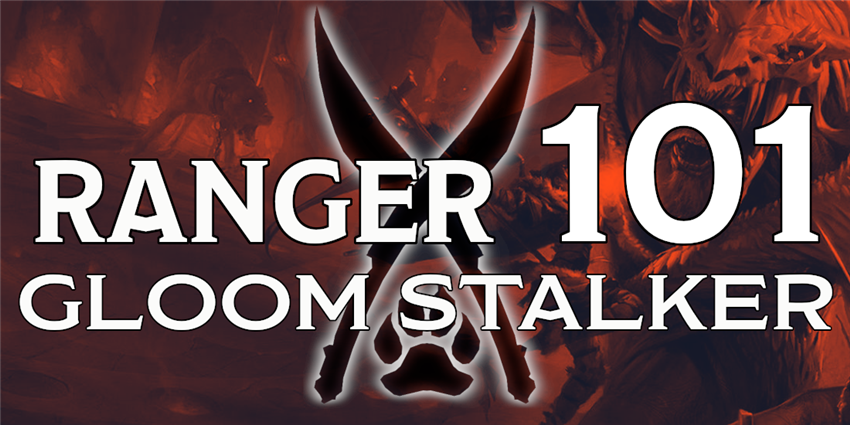
Benefits of the Gloom Stalker
The ranger class melds the martial prowess of a fighter with the natural attunement of a druid and the evasive cunning of a rogue. The Gloom Stalker is a ranger that leans even harder into the ranger’s roguish nature by making them a master of moving unseen, even to creatures whose darkvision usually lets them see through darkness and dim light. One of the Gloom Stalker’s most powerful features is this ability to defy darkvision by becoming invisible to creatures with darkvision while within total darkness (though not within dim light). While the wording of invisible may make this feature seem unusually powerful, it’s just a leveling of the playing field. Creatures within total darkness are already completely invisible to creatures without darkvision—so now they are operating under the same rules as everyone else, at least as far as you’re concerned.
The Gloom Stalker has a well-balanced array of offensive and defensive combat options, and the Umbral Sight feature described earlier has a number of applications in exploration encounters as well. They also receive one small improvement to their social skills, an area the base ranger class is traditionally lacking in—the disguise self spell is added to their ranger spell list through the Gloom Stalker Spells feature. If you want to improve your social skills further, you may wish to multiclass into bard or rogue, particularly the College of Whispers or Swashbuckler roguish archetype, both also from Xanathar’s Guide to Everything.
Perhaps the most interesting aspects of the Gloom Stalker’s combat toolkit are how unique they are. No other subclass allows you to make another attack when you miss once per turn, or become invisible to creatures with darkvision, or impose disadvantage on attacks aimed at you. Your unique combat abilities make you a hunter truly to be feared.
Drawbacks of the Gloom Stalker
As mentioned above, the ranger class has precious few social boons. Unless you have an unusually high Charisma score or have a background that grants you proficiency in the Persuasion skill, your social options are woefully limited. If you, the player, are a charismatic roleplayer then you may not have a problem, but just as no fighter player should be expected to arm wrestle their Dungeon Master, a character who wants to be socially competent shouldn’t be expected to be a silver-tongued charmer themself.
Beyond this, none of the Gloom Stalker’s class features have any inherent drawbacks. Simply remember, the Gloom Stalker is a ranger, which makes them a hunter. The ranger’s class features are focused on tracking creatures and attuning yourself to the world around you. Much like the Way of Shadows monk, while this subclass gives you the ability to be a shadowy ambusher, you are not necessarily an assassin. If you want to deal massive damage from the darkness, you might want to play an Assassin rogue instead.
Suggested Build
Like most classes in D&D, the ranger doesn’t choose their subclass until 3rd level. If you’re playing a ranger from 1st level and think you want to become a Gloom Stalker later, you should choose a race that improves your Dexterity score and also your Wisdom score. Dexterity makes you better with ranged or finesse weapons, and improves your Armor Class while in light or medium armor. Your Wisdom score improves a number of your ranger class features, as well as your spell save DC, which makes it harder for foes to resist your spells. Because of this, your Dexterity score should be your highest ability score, and your Wisdom should be your second highest score.
Wood elves make good Gloom Stalkers, thanks to their ability score spread and their Mask of the Wild feature. Dark elves also make excellent Gloom Stalkers, even though their ability scores aren’t quite perfect, thanks to their natural proclivity toward hunting in the Underdark, their impressive racial darkvision, and their innate spellcasting. And, thanks to their versatility, humans are never a bad choice for any class.
Fighting Style
Your first major build decision comes at 2nd level, when you have the option to choose your Fighting Style. Rangers have several options, but the best two options for you are either Archery or Two-Weapon Fighting. Archery gives you a serious accuracy bonus when fighting with ranged weapons (not just bows!) and Two-Weapon Fighting grants you a small damage bonus while dual wielding. Archery is probably the better style in a vacuum, but your character concept should supersede what is mechanically “optimal.”
Defense is a perfectly reasonable fighting style if you have mediocre defenses, but generally speaking, investing in offense is better for rangers. Only consider the Dueling fighting style if you’re playing a more defensive ranger with a one-handed melee weapon, such as a rapier, and a shield.
Spells
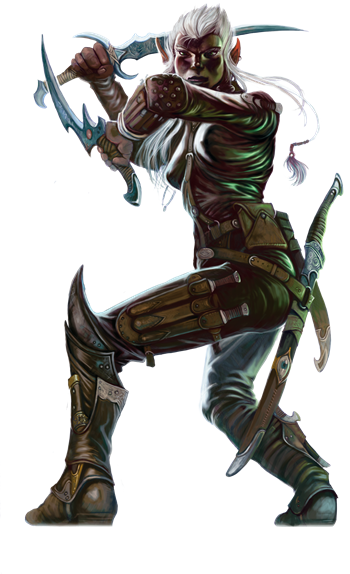 Your second major decision comes at 2nd level, too! You first gain the ability to cast spells at this level, drawing from their own unique spell list. While your spell selection is more limited and you gain access to more powerful spells more slowly than “full caster” classes, you balance it out with your robust combat arsenal. Take this time before you gain your subclass at 3rd level to feel out what your role in the party is. That way, when you do gain your subclass, you’ll know what spells your party needs you to have access to on a regular basis.
Your second major decision comes at 2nd level, too! You first gain the ability to cast spells at this level, drawing from their own unique spell list. While your spell selection is more limited and you gain access to more powerful spells more slowly than “full caster” classes, you balance it out with your robust combat arsenal. Take this time before you gain your subclass at 3rd level to feel out what your role in the party is. That way, when you do gain your subclass, you’ll know what spells your party needs you to have access to on a regular basis.
When you reach 2nd level, you learn two 1st-level spells from the ranger spell list. Unlike some other spellcasting classes, once a ranger learns a spell, they know that spell forever. You can "trade out" one known spell for another spell on your spell list when you gain a level, but that's it. From here on out, you learn one new ranger spell at 3rd level, and at every odd-numbered level thereafter. You also gain access to a new spell level at 5th level, and every four levels thereafter. This is where retraining spells becomes important; if you know low-level spells that just aren’t useful to you anymore, you can swap them out for higher-level spells one-by-one to adapt to rising challenges.
As an offense-focused subclass, you’ll want to start by picking two spells labeled OFFENSE at 1st level. From there, you can be the judge of what spells you need to best support yourself and your party. Picking up a few spells labeled DEFENSE or SUPPORT over time couldn’t hurt, but you’ll want to make sure that your offense is always top-notch. As mentioned above, a large number of ranger spells require concentration, and you can’t have more than one concentration spell active at a time, so be careful.
Since this subclass is found in Xanathar’s Guide to Everything, this Ranger 101 guide includes spells from both that book and the Player's Handbook.
- Cure wounds (SUPPORT)
- Ensnaring strike (OFFENSE/DEFENSE)
- Hail of thorns (OFFENSE)
- Hunter’s mark (OFFENSE)
- Snare (DEFENSE)
- Speak with animals (SOCIAL)
- Zephyr strike (COMBAT)
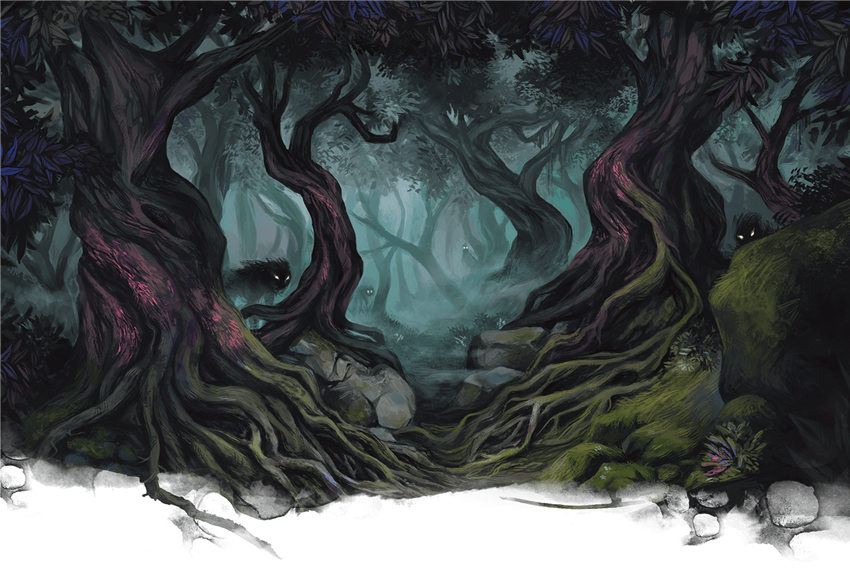
Feats
Once you’ve improved your Dexterity or Wisdom score to 18 or 20, you can increase your power with a few useful feats. The following feats are good picks for Gloom Stalker rangers, and will improve your reliability in your own desired area of expertise:
Dual Wielder. This feat ups both your offense and your defense while wielding a weapon in both hands. A fine feat to take, especially if your Dexterity score is already maxed out at 20.
Elven Accuracy. This feat, from Xanathar’s Guide to Everything, is a must-have for any elven or half-elven archer. It’s an incredibly powerful offensive tool, and will serve any Gloom Stalker well.
Sharpshooter. If you’re a ranger with a longbow and the Archery Fighting Style, this feat can turn you into a mobile laser cannon, tearing enemies to shreds with arrows that regularly deal 20 damage in a single hit. Ignoring cover is a potent benefit, in addition to the damage.
Skulker. A perfect feat for any stealthy character to take, this feat is suitable for silent hunters who stalk their prey through darkened streets and caverns.
If you want more advice for building a ranger, check out Ranger 101. Have you ever played a Gloom Stalker? What advice would you give to players that want to play this subclass? Next week, journey into a realm of trickery and illusion in Rogue 101: Arcane Trickster!
Create A Brand-New Adventurer Acquire New Powers and Adventures Browse All Your D&D Content
 James Haeck is the lead writer for D&D Beyond, the co-author of Waterdeep: Dragon Heist, Baldur's Gate: Descent into Avernus, and the Critical Role Explorer's Guide to Wildemount, a member of the Guild Adepts, and a freelance writer for Wizards of the Coast, the D&D Adventurers League, and other RPG companies. He lives in Seattle, Washington with his fiancée Hannah and their animal companions Mei and Marzipan. You can find him wasting time on Twitter at @jamesjhaeck.
James Haeck is the lead writer for D&D Beyond, the co-author of Waterdeep: Dragon Heist, Baldur's Gate: Descent into Avernus, and the Critical Role Explorer's Guide to Wildemount, a member of the Guild Adepts, and a freelance writer for Wizards of the Coast, the D&D Adventurers League, and other RPG companies. He lives in Seattle, Washington with his fiancée Hannah and their animal companions Mei and Marzipan. You can find him wasting time on Twitter at @jamesjhaeck.








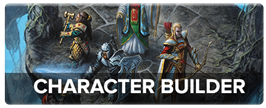
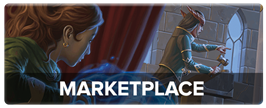
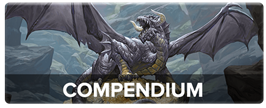
-
View User Profile
-
Send Message
Posted Oct 16, 2020And this is what it says re translated.
Ranger's grip tightened around his shortsword hilt. It is needed only to wait would no longer be their significance for the return to a kind of confused knowledge of illithid, a clockwise circle around the Sun and decision. The cave in the rock, you set up the area of the feet of some of the more than twenty sat a proud man, the perfect time, and he himself was waiting for the ranger, do strike. Slowly and silently drew his sword like a flat preparing familiar songs cats.-
View User Profile
-
Send Message
Posted Oct 16, 2020I highly recommend a Blade Warlock with Gloom stalker. Lots of great synergy, such as Rope Trick for safe short rests to get your slots back.
-
View User Profile
-
Send Message
Posted Oct 16, 2020I'm always undecided about dual-wielding because it eats up my bonus action, & doesn't give as much back after 5th level, with Attack getting 2 swings and / or other abilities & spells to use instead of a extra swing. Anyone have a good home-brew rule to help it scale a little better?
-
View User Profile
-
Send Message
Posted Oct 16, 2020I would like a Horizon Walker, Also XGtE
-
View User Profile
-
Send Message
Posted Oct 17, 2020So I play a Gloom Stalker and Shadow Touched Sorcerer multi class. Spells like shadow blade, blur, false life, shield, the darkness spell using your sorcery points, and booming blade make for a very flavorful dodgy melee character that absolutely shreds people in the dark. I took the mobile feat to really get the most out of booming blade. You can also splash 1 level of warlock to get all your spell slots back each short rest and/or 3 levels of rogue Assassin to REALLY get the drop on people in combat. I love playing my character. It’s a lot of fun.
-
View User Profile
-
Send Message
Posted Oct 17, 2020Can I use this build?
-
View User Profile
-
Send Message
Posted Oct 17, 2020war caster and tough are also good a dual can still cast with hands full and in silence and tough adds hit points per level
-
View User Profile
-
Send Message
Posted Oct 17, 2020@FarwinMageBlood Absolutely! Enjoy!
-
View User Profile
-
Send Message
Posted Oct 18, 2020I'm running a level 12 gloom stalker (well, 11 plus 1 level in rogue since we lost our arcane trickster) and I think it's a strong subclass. It's just a pity that WotC made the rogue's scout subclass a better ranger than the ranger.
-
View User Profile
-
Send Message
Posted Oct 18, 2020It happens. Our cleric managed to banish Strahd because everyone (including the DM) forgot about his legendary resistance!
-
View User Profile
-
Send Message
Posted Oct 18, 2020It really is one of the most fun sub-classes to play across all the classes in 5E. At low levels, Dread Ambusher is quite helpful and fun to pull off. Combine the extra movement with Zephyr Strike and set up your party for a much more advantageous first turn. My son used a drow Gloom Stalker/Druid in our campaign, and he was just so darn cool and fun to watch wreak havoc in the Underdark.
Long live Rangers!
-
View User Profile
-
Send Message
Posted Oct 19, 2020Keep in mind the gloomstalker's extra attack is "when you take the attack action on 1st turn in combat".
Ranger 5 / Fighter 2 = 6 attacks on turn 1.
Add sharpshooter and easily 1-shot bosses.
Also, kobolds make really good gloom stalkers (and sharpshooters, as packtics helps negate the -5 to hit).
-
View User Profile
-
Send Message
Posted Oct 19, 2020I just looked up Zephyr Strike. Also makes the ranger a perfect rearguard - double movement and still able to shoot pursuers!
Darn, I misread the card! The double movement's just for one turn. Oh well, never mind...
-
View User Profile
-
Send Message
Posted Oct 20, 2020I am feeling the same about duel wielding because, for example, a great sword does 2d6+str mod on a hit. A level 1 fighter can do that damage on his turn, and still have a bonus action. It does not seem fair because a level 1 fighter wielding two shortswords (1d6) could attack with both swords, and lose his bonus action, and if he fails one attack, then it is much less damage. Also, you don’t add your str or dex mod to the second swords damage, meaning that the max damage dealt by both these fighter versions in an action is the same, but one has to waste his bonus action and have less of a chance to deal full damage. This is annoying.
-
View User Profile
-
Send Message
Posted Oct 20, 2020Just rolled up my first ranger ever and chose to go Kobold Gloom Stalker, taking the smuggler background. I'm really excited to see how he plays out!
-
View User Profile
-
Send Message
Posted Oct 20, 2020But... That means you totally missed the point of dual-wielding. DW style means you DO add the modifier to the second damage; therefore, dealing 2d6+2*dex/str, instead of 2d6+str.
So you deal slightly higher damage, divided over more attacks, at the cost of your bonus action. Not too bad. The issue is on higher levels, when you're more likely to have a useful bonus action, and extra attack would make the normal output 4d6+2*str (GWF) vs 3d6+3*dex/str (DW), and at that point GWF style wins at damage without using up your bonus action.
Hunter's mark, revised ranger's favored enemy, etc. help mitigate that by giving a damage bonus per attack, therefore rewarding you for having more attacks per turn.
-
View User Profile
-
Send Message
Posted Oct 20, 2020Yes action surge is lvl 2
-
View User Profile
-
Send Message
Posted Oct 20, 2020Let Weis and Hickman release more books please
-
View User Profile
-
Send Message
Posted Oct 22, 2020Question to DM from every Gloomstalker: "Is it dark in here?"
-
View User Profile
-
Send Message
Posted Oct 24, 2020I am about to hit level 5 with my Gloomstalker, is it worth taking to lv seven for the wisdom saving throw proficiency or mc into Battlemaster as planned?